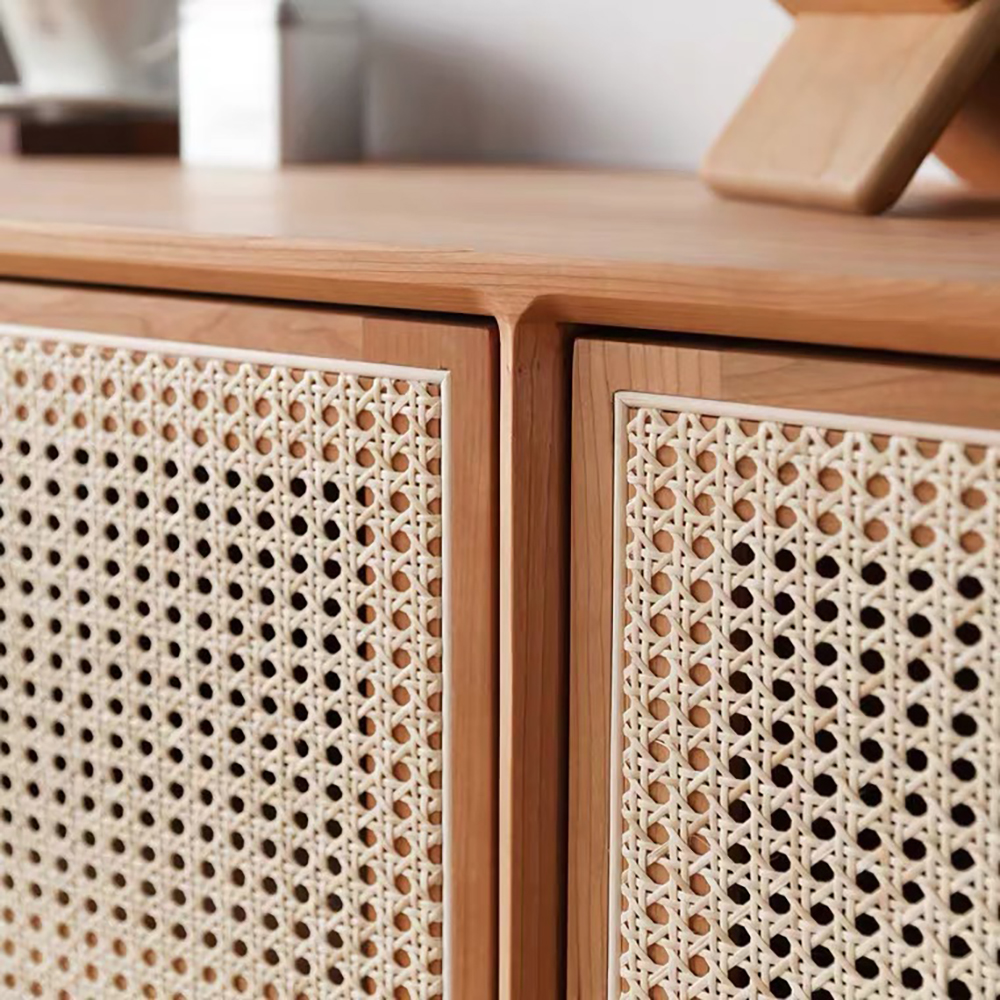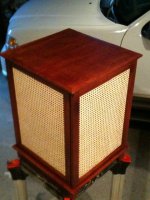Packard
Member
I am going to try my hand at using wicker in place of the center panel on a linen cabinet. There are lots of articles on Ikea Hacks where the center panel is sawn out and wicker is stapled in from behind. That is not what I want to do.
I want to use my router to route a groove around the perimeter of the opening and use a reed spline to lock the wicker in place. I've watched videos and I think it is within my capabilities. Here is an image showing the type of work I am describing.
Cabinets made like this are priced in the thousands of dollars. I think it looks rich.
My problem is that I will be painting the cabinets. Do I cut the grooves before paint or after? How do I protect the finish if I cut it afterward? Perhaps I mask the slot and paint first? I am afraid that when I remove the masking it will leave a ragged edge that will be highly visible.
Or paint it and clean up the groove afterwards?
I will cut these on the router table.
Also, I usually use 3" nominal (2½" wide) rails and stiles and assemble with stub tenons. For this application I am thinking of using 4" wide and using dowels. The appearance of the rails and stiles should still look like they are actually 2½" wide because the rattan will cover close to 1" of the inner dimensions.
I would normally poplar for painted rails and stiles, but I think maple would be a better choice here.
Is there anyone with experience in this process?

I want to use my router to route a groove around the perimeter of the opening and use a reed spline to lock the wicker in place. I've watched videos and I think it is within my capabilities. Here is an image showing the type of work I am describing.
Cabinets made like this are priced in the thousands of dollars. I think it looks rich.
My problem is that I will be painting the cabinets. Do I cut the grooves before paint or after? How do I protect the finish if I cut it afterward? Perhaps I mask the slot and paint first? I am afraid that when I remove the masking it will leave a ragged edge that will be highly visible.
Or paint it and clean up the groove afterwards?
I will cut these on the router table.
Also, I usually use 3" nominal (2½" wide) rails and stiles and assemble with stub tenons. For this application I am thinking of using 4" wide and using dowels. The appearance of the rails and stiles should still look like they are actually 2½" wide because the rattan will cover close to 1" of the inner dimensions.
I would normally poplar for painted rails and stiles, but I think maple would be a better choice here.
Is there anyone with experience in this process?



